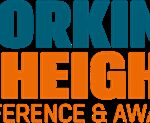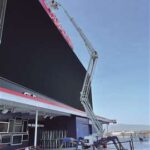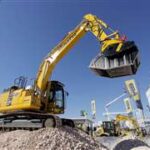When to Use a Scissor Lift Harness
Introduction: Why Scissor Lift Harnesses Matter
When operating a scissor lift, it’s crucial to equip workers with harnesses. A properly used scissor lift harness can significantly reduce the risk of accidents, injuries, and fatalities. It also ensures compliance with OSHA’s safety guidelines for scissor lifts. More importantly, using a harness prevents dangerous falls from significant heights, contributing to a safer work environment.
OSHA’s Scissor Lift Harness Requirements
To maximize the benefits of scissor lift harnesses, workers must be trained in their proper use. Training ensures workers can safely wear harnesses while working at height, thus preventing potential falls. CertifyMeOnline.net, a leader in aerial lift training, offers OSHA-compliant fall protection courses, helping businesses ensure their employees are well-prepared for safety audits.
OSHA’s Fall Protection Standards
Falls are the leading cause of fatalities in the construction industry. According to OSHA, fall protection systems, including harnesses and lanyards, are mandatory whenever a worker is exposed to a fall of 6 feet or more. By providing scissor lift fall protection accessories, including safety harnesses, employers can foster a safer, more productive work environment.
The Scissor Lift Harness Debate
The debate over when a safety harness is required on scissor lifts has been ongoing. While aerial lifts and boom lifts, which reach greater heights, generally justify the need for a safety harness, scissor lifts, with their lower operating heights, present a different case. However, OSHA considers any work surface higher than 6 feet a potential fall hazard, meaning scissor lift operators must still consider safety protocols.
Some argue that wearing a harness on a scissor lift can impede efficiency, while others stress that it’s essential for ensuring safety. The truth lies in understanding OSHA’s stance and local safety standards, which can vary depending on the job site.
What Is a Safety Harness and Why Is It Important?
A scissor lift harness is designed not to prevent a fall but to stop it once it occurs. It helps distribute the force of the fall across the body to minimize injury. Harnesses keep workers upright during a fall, allowing deceleration devices to deploy properly, which minimizes the risk of spinal injuries. However, improper use of a harness can restrict circulation and cause blood to pool in the legs.
OSHA Scissor Lift Harness Requirements
Though OSHA doesn’t specifically mandate the use of harnesses on scissor lifts, certain jurisdictions or companies may have stricter safety requirements. This inconsistency is at the heart of the scissor lift harness debate. The need for a harness depends on local regulations and specific job site safety protocols.
Pros and Cons of Wearing a Safety Harness
The advantages of wearing a safety harness are clear: they significantly reduce the risk of falls, helping protect workers from serious injury or death. However, there are some disadvantages. Harnesses can interfere with tasks and, if improperly attached, may cause accidents such as tipping over the lift. Furthermore, many scissor lifts don’t have designated attachment points for harnesses, and OSHA prohibits tying off to guardrails.
Despite these drawbacks, the safety benefits of using a harness far outweigh the potential risks. When workers consistently wear harnesses on scissor lifts, they are better protected against falls and injuries.
Harness and Fall Protection Standards for Aerial Lifts
OSHA provides general guidelines for aerial work platform (AWP) operators and specific guidelines for the construction industry. Scissor lifts, being classified as scaffolding rather than aerial lifts, have more lenient requirements. However, this doesn’t mean safety should be overlooked. Scissor lifts still need to be equipped with guardrails, and operators should always ensure that they are in good working order before use.
Scissor Lift Fall Protection Requirements
OSHA mandates that scissor lifts must have guardrails, which provide primary fall protection. If the guardrails are inadequate, additional fall protection measures, such as a harness, should be implemented. Operators must stand on the platform floor at all times and avoid leaning over the guardrails.
Do I Need a Harness in a Scissor Lift?
Although OSHA does not require harnesses for scissor lift operators under normal circumstances, there are situations where additional fall protection is necessary. These include:
- When no guardrail system is in place.
- If the guardrail is not sufficiently secure.
- When the worker steps outside the work platform.
For these cases, wearing a harness with an attached lanyard ensures extra protection.
How to Wear a Scissor Lift Safety Harness
Proper training is essential to ensure workers know how to use a scissor lift harness correctly. Training covers everything from wearing and adjusting the harness to using attachment points properly. If your scissor lift has anchor points, be sure to contact the manufacturer for specific guidance on how to use them safely.
CertifyMeOnline.net offers comprehensive OSHA-compliant training on scissor lift harness requirements, ensuring workers understand how to use safety harnesses to minimize fall risks.




